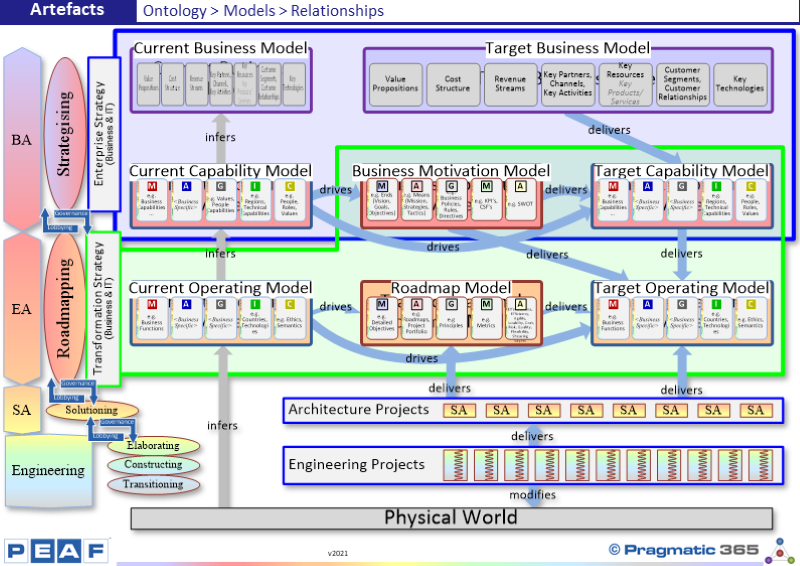
Here we see an outline of the Artefacts required to perform
the Roadmapping phase that constitutes “doing” Enterprise Architecture and
forms the basis for a project to perform the required work. The information
flows into the portfolio of projects that effect the change defined by the
roadmap. We also include the Business, Capability and Motivation model work
(Business Architecture) because if this work is not done to the required
standard, and/or its output is no represented and accessible in a reasonable
way, the EA work is likely to produce far from optimum results in the best
case, and catastrophic results in the worst case.
...to read more, please Login or Register